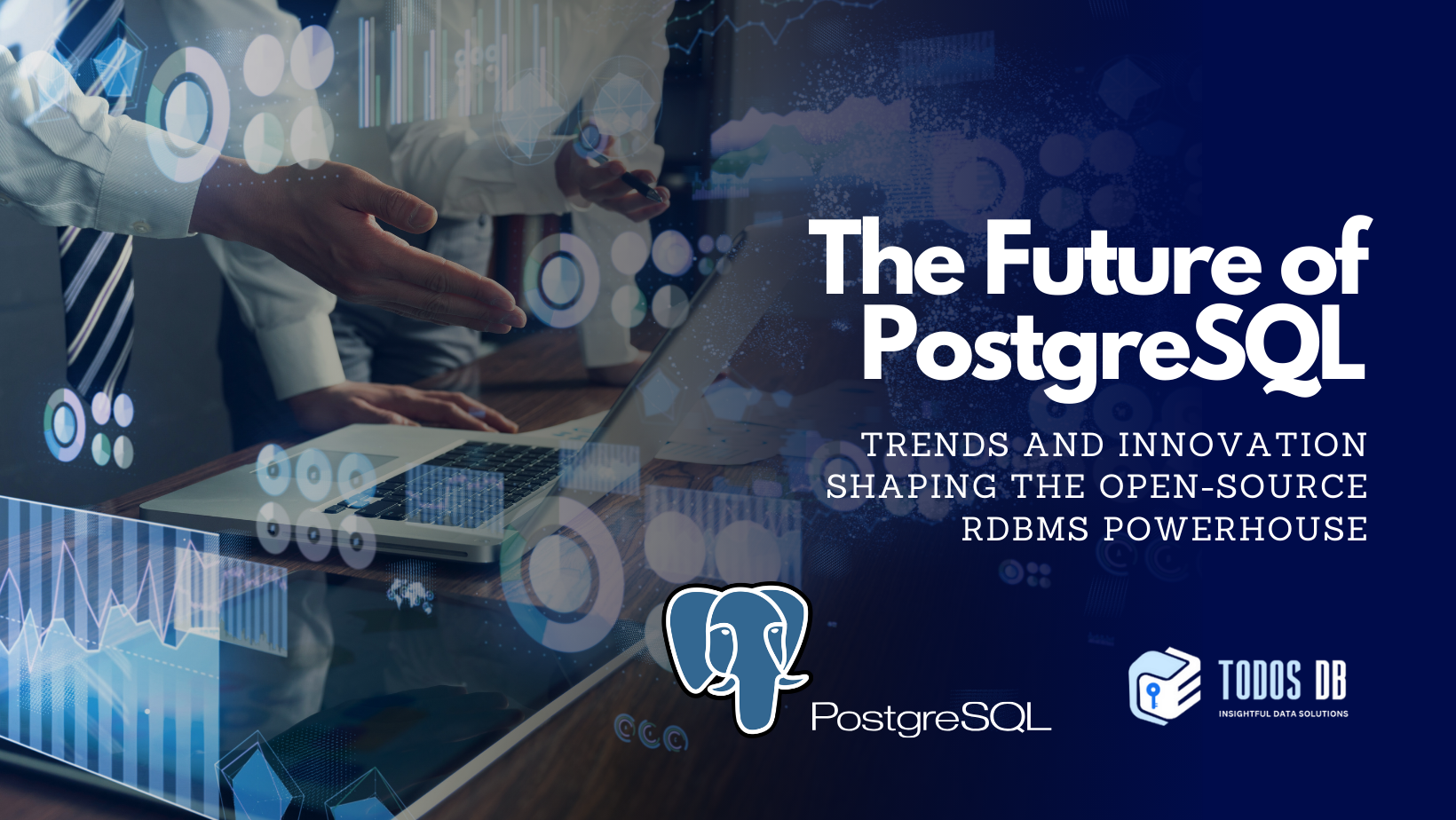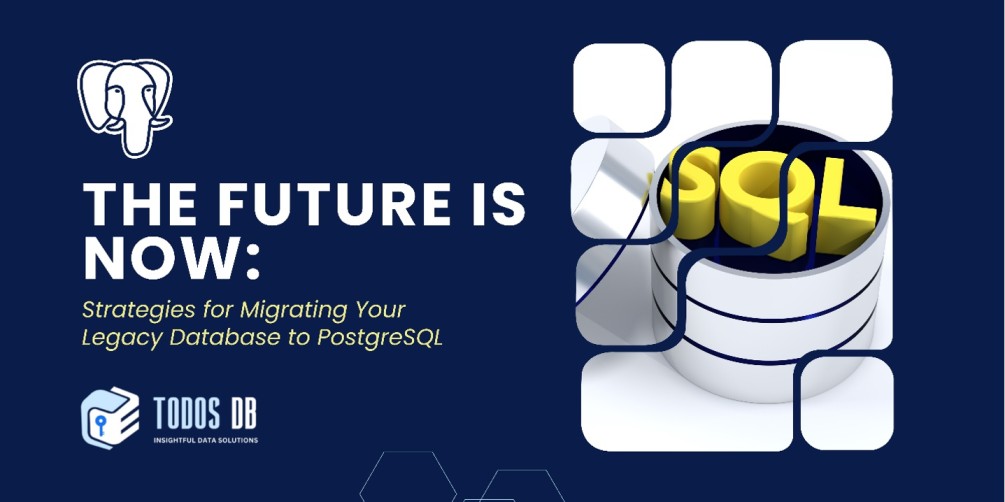PostgreSQL, fondly known as Postgres, is a cornerstone of the open-source RDBMS (Relational Database Management System) world. Renowned for its robustness, extensibility, and adherence to SQL standards, Postgres has carved a niche for itself since its inception in the 1980s. Today, it’s a compelling alternative for organizations seeking a feature-rich and reliable database solution. This article delves into the future of PostgreSQL, exploring the emerging trends and innovations shaping the database landscape.
From Research Project to Enterprise Powerhouse: A Look Back
PostgreSQL’s journey began as a research project at the University of California, Berkeley. Over the years, the dedicated PostgreSQL community has relentlessly expanded its capabilities, transforming it into a viable competitor to commercial RDBMS offerings. With a core focus on data integrity, reliability, and performance, PostgreSQL has earned a reputation for being a versatile and scalable database solution.
Trends Shaping the Future of PostgreSQL
1. Scaling for the Data Deluge: Enhanced Scalability and Performance
The ever-growing volume of data organizations grapple with necessitates scalable and performant database solutions. PostgreSQL has made significant strides in this area, boasting features like:
- Parallel Query Processing: Distributes query workloads across multiple cores or machines, accelerating query execution.
- Improved Indexing Mechanisms: Utilizes advanced indexing techniques like B-tree and GiST indexes to optimize data retrieval.
- Multi-Core Processor Support: Leverages the power of modern multi-core processors for improved concurrency and faster data processing.
The future of PostgreSQL will likely see further advancements in query optimization algorithms and resource utilization, ensuring high performance even under heavy workloads.
2. Cloud-Native Deployments: Embracing the Cloud Revolution
The rise of cloud computing has fostered a demand for databases that thrive in cloud-native environments. PostgreSQL has embraced this trend by offering features like:
- Multi-tenancy Support: Enables secure isolation of data for multiple tenants within a single database instance.
- Automated Failover: Ensures high availability by automatically switching to a secondary replica in case of a primary node failure.
- Integration with Cloud Platforms: Provides seamless integration with popular cloud platforms like AWS, Azure, and GCP.
Going forward, we can expect PostgreSQL to further enhance its cloud compatibility with features tailored for easy deployment and management in cloud environments.
3. Data Security and Compliance: Fortifying the Digital Vault
In an era of escalating data breaches and stricter regulations, data security and compliance are paramount concerns for organizations. PostgreSQL has a proven track record in this area, offering robust security features:
- Advanced Authentication Mechanisms: Supports various authentication methods like password authentication, Kerberos, and LDAP for secure user access control.
- Data Encryption: Enables encryption of data at rest and in transit to safeguard sensitive information.
- Auditing Capabilities: Provides comprehensive auditing logs to track database activity and ensure regulatory compliance.
The future of PostgreSQL will likely see continued focus on shoring up security features to address evolving threats and meet the demands of ever-changing compliance standards.
4. Unlocking Insights: Machine Learning and AI Integration
Organizations are increasingly leveraging machine learning (ML) and artificial intelligence (AI) for data analysis, necessitating databases that seamlessly integrate with these technologies. PostgreSQL has already made progress in this arena, offering:
- Advanced Analytics Functions: Provides built-in functions for statistical analysis, data mining, and machine learning tasks.
- Extensions for Machine Learning Algorithms: Supports integration with popular ML libraries like scikit-learn and TensorFlow through extensions.
Looking ahead, PostgreSQL can further enhance its capabilities for AI integration by:
- Optimizing for ML Workloads: Tailoring database operations for specific ML algorithms and data structures.
- Simplifying AI Framework Integration: Streamlining the process of integrating with popular AI frameworks.
By embracing AI, PostgreSQL can position itself as a preferred choice for data science projects.
5. Microservices and Containerization: Embracing the Modern Development Paradigm
The adoption of containerization and microservices architectures has revolutionized application development and deployment. PostgreSQL has adapted to this shift by providing:
- Containerized Deployments: Supports packaging and deploying PostgreSQL instances as containers, facilitating portability and scalability.
- Orchestration Tool Integration: Integrates seamlessly with container orchestration tools like Kubernetes for automated management of database deployments.
The future of PostgreSQL is likely to see further optimization for containerized environments and provide tools for seamless integration with microservices architectures.

Innovation: Fueling the Future of PostgreSQL
1. PostgreSQL Extensions: A Flourishing Ecosystem
One of PostgreSQL’s key strengths is its extensibility. Developers can create custom extensions to enhance the database’s functionality. We can expect to see a proliferation of innovative extensions that address specific use cases and industry requirements. These extensions could range from:
- Specialized Indexing Techniques: Enhance data retrieval performance for specific data types or query patterns.
- Advanced Data Processing Algorithms: Provide functionalities like text analysis, image recognition, or geospatial processing within the database.
- Domain-Specific Extensions: Cater to specialized industries like finance, healthcare, or logistics by offering industry-specific data models and functionalities.
This rich ecosystem of extensions will further expand PostgreSQL’s capabilities and make it a versatile platform for diverse use cases.
2. Graph Database Capabilities: Expanding the Data Model
While PostgreSQL is primarily a relational database, there is a growing demand for handling complex relationships in data using graph databases. Innovations in this area could include:
- Native Graph Support: Potential for future versions of PostgreSQL to incorporate native graph data structures and query languages for efficient graph traversal and analysis.
- Graph Extensions: Development of extensions that provide graph database functionalities on top of the existing relational model, enabling storage and querying of graph data within PostgreSQL.
By incorporating graph database capabilities, PostgreSQL can cater to a wider range of use cases, such as social network analysis, recommendation systems, and fraud detection.
3. Blockchain Integration: Bridging the Blockchain Gap
With the increasing interest in blockchain technology and decentralized applications, there is a potential for PostgreSQL to integrate blockchain capabilities into its ecosystem. Innovations in this area could involve:
- Blockchain Data Extensions: Development of extensions for storing and querying data from blockchains directly within PostgreSQL.
- Smart Contract Execution: Enabling the execution of smart contracts within the database, potentially leveraging PostgreSQL’s security features and processing power for blockchain applications.
- Blockchain Network Integration: Establishing seamless integration with popular blockchain networks like Ethereum or Hyperledger Fabric.
By embracing blockchain technology, PostgreSQL can position itself as a versatile platform for building and deploying blockchain-based applications and services.
4. Real-Time Analytics: Powering Real-Time Decisions
In today’s fast-paced business environment, real-time analytics are essential for making data-driven decisions. PostgreSQL can innovate in this area by:
- Enhanced Stream Processing: Providing built-in functionalities or extensions for ingesting, processing, and analyzing data streams in real-time.
- Complex Event Processing (CEP) Support: Enabling the implementation of CEP rules within the database to identify patterns and anomalies in real-time data streams.
- Integration with Real-Time Analytics Tools: Streamlining data exchange with popular real-time analytics tools and dashboards.
By providing tools for real-time analytics, PostgreSQL can empower organizations to gain valuable insights from their data as it is generated, enabling them to react swiftly to changing market conditions and customer needs.
Conclusion: A Bright Future for the Open-Source Powerhouse
The future of PostgreSQL is brimming with potential, with emerging trends and innovations poised to further solidify its position as a leading open-source RDBMS solution. By focusing on scalability, cloud-native deployments, data security, AI integration, and other key areas, PostgreSQL is well-equipped to meet the evolving needs of organizations in an increasingly data-driven world. With a vibrant community of developers and users driving its development, PostgreSQL is set to continue its journey of innovation and excellence in the years to come.

